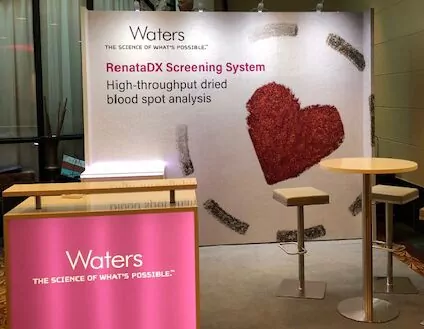11th ISNS European Regional Meeting, Bratislava Slovakia; An Overview

A common concern in newborn screening: Reliability
Our launch of the RenataDx Screening System was announced just a few days before the opening of the 11th International Society for Neonatal Screening (ISNS) European regional meeting in Bratislava, Slovakia.
The news of the arrival of RenataDX Screening System for high-throughput dried blood spot analysis was welcomed by the screening community, who, having chosen “Reliability of Screening Results” as the theme of the meeting, clearly have quality on their mind.
In her opening address to the congress, local organizing committee chairwoman Maria Knapkova conveyed the message that reliability applies to all areas of the screening process:
- Analytical reliability – is the methodology in order?
- Clinical reliability – are affected infants identified efficiently?
- Cost-effectiveness – does a screening service offer value for money?
As a manufacturer of in vitro diagnostic (IVD) medical devices, I feel Waters, and our contemporaries, have a duty of care to address these issues when developing new products. Let’s design instruments with the needs of clinical scientists who are analyzing dried blood spots in mind. Let’s provide the necessary range of tools and techniques, so laboratories can offer not only flow-injection analysis, but also UPLC separations when this allows a better quality, and value-for-money analytical service. Let’s make sure our own Waters field teams have the knowledge and skill to listen to needs of the clinical scientist, and make sure they not only help the laboratory choose the right Waters platform, but also ensure that everything is in place to keep those systems running to allow the laboratory to make the most of their investment.
“Robust” is a word, which, if you look for it, you will probably find in most manufacturer’s promotional materials. As a scientist, working in a commercial environment, I feel it is my duty to apply this word in a slightly different context. As part of the team developing and manufacturing IVD medical devices, I will not shy away from robust scientific discussions about the current and future use of mass spectrometry in the clinical laboratory.
Mass spectrometry has its advantages in terms of analytical specificity and sensitivity, and this, with standardization of practices, can contribute to the success of analytical harmonization. Yet still, we see work presented by Rachel Carling and Marelle Bouva showing that despite efforts to harmonize aspects of expanded newborn screening, inter-laboratory variation remains a challenge for some.
With the intention of not shying away from robust scientific discussion, I will present a webinar on December 13th to discuss potential causes for variability in flow-injection analysis with tandem mass spectrometry, ending with a live question and answer session.
Those who were able to view the scientific posters in ISNS’s innovative electronic poster gallery will have seen not only the poster versions of Drs. Carling and Bouva’s podium presentations, but also the work from many of the laboratories already routinely using Waters products. You may have seen the names ACQUITY UPLC, Xevo TQD, and ACQUITY TQD, and even Xevo TQ-S. The RenataDX Screening System is the offspring of the ACQUITY UPLC and Xevo families of hardware. Perhaps next year at the global meeting of ISNS members in Hangzhou, China, we will see more of the name RenataDX Screening System – not just in the exhibition space, but in the content of scientific posters and oral presentations.
Read more about mass spectrometry-based newborn screening:
Popular Topics
ACQUITY QDa (16) bioanalysis (11) biologics (14) biopharma (26) biopharmaceutical (36) biosimilars (11) biotherapeutics (16) case study (16) chromatography (14) data integrity (21) food analysis (12) HPLC (15) LC-MS (21) liquid chromatography (LC) (19) mass detection (15) mass spectrometry (MS) (54) method development (13) STEM (12)



